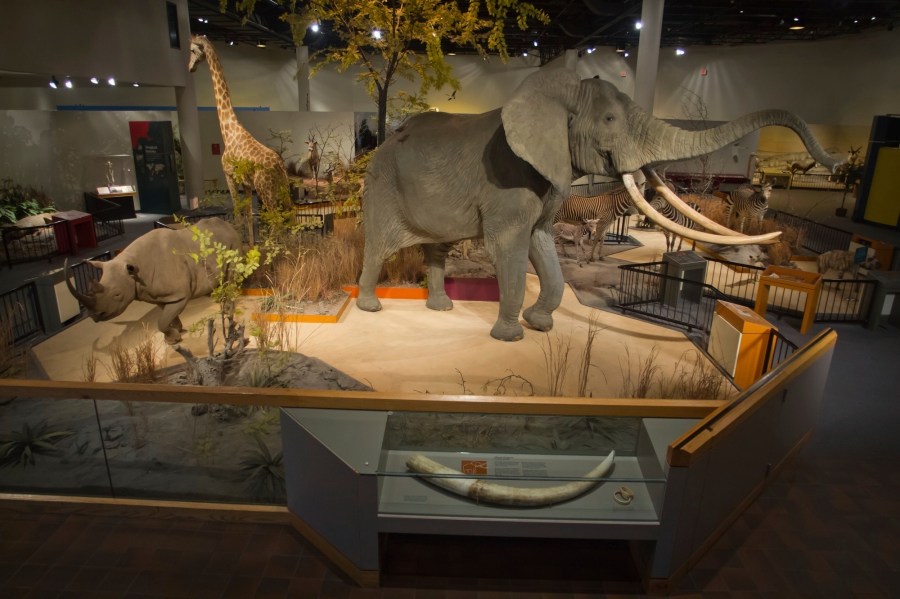SIOUX FALLS, S.D. (KELO) – The overall quality of the Delbridge Museum’s taxidermy specimen is good, but more than 150 of them will still need repairs or restoration, consultants told the city’s work group on Friday.
It will take an estimated $847,000 to restore or repair the specimens, consultants A.M. Art Conservation and George Dante Studios, said on Friday. About 50% of the collection is in good condition with others ranking at excellent and even exceptional.
Eighteen specimen are not recommended for restoration or repair, said Rachel Arenstein of A.M.
The consultants did find arsenic in the specimen which is one reason why Great Plains Zoo officials and the city decided to close the Delbridge in August 2023. A work group was formed after the closure to determine the fate of the collection.
The collection is valuable for scientific and educational purpose, Arenstein said.
The report from A.M. Art Conservation and George Dante Studios, is a 25-page report. The full report, which you can read below, includes a history of the Delbridge Museum of Natural History, taxidermy ethics, survey data on the collection, arsenic testing and recommended next steps for city leaders.
The work group is hoping that value results in a non-profit or non-profits who want part or all of the collection. The work group decided on Friday to request proposals for the collection and impose a 90-day timeline to receive them.
Any submitter, “has got to show the financial where with all” to handle the collection or any specimen, group member and council member Rich Merkouris said. Also, the proposal needs to include education and scientific use, he said.
There has already been out-of-state interest in the collection, said Becky DeWitz, the executive director of the Great Plains Zoo and Butterfly House and Aquarium.
The collection could stay in Sioux Falls, but working group members didn’t express any verbal or visible support for an alternative site at the zoo.
A new location on the south end of the zoo, not far from the penguin exhibit could house specimen from the Delbridge collection, DeWitz said.
But that comes at an estimated cost of about $4.6 million for construction, and costs for dioramas for presentation, and 6-foot tall glass partitions. If the specimen are fully enclosed in glass, that will increase the cost to $5.7 million. DeWitz used the A.M. estimated for restoration work at about $850,000, so total remediation is at $1.4 million with deep cleaning, pest treatment, arsenic work and the restoration included in that.
Work group member Jeff Scherschligt said because costs will likely increase if that option was chosen, the cost could be closer to $8 million.
The group spent more time discussion the idea of requesting proposals for the specimen.
“Should we spend the $1 million to get (collection) up to a quality state…?” group member Mick Conlin asked. Then, an entity could offer to reimburse the city for the that cost, he said.
That reimbursement would be legal if the proper transfer is used, an official with the group said.
Conlin also stressed the group should consider proposals for part of the collection and not just the whole collection.
When the Delbridge closed, there was an outcry from some members of the public including some who had suggestions for local options.
A new location at the zoo could be a chance for a group to raise money for that option, Scherschligt said. Maybe the city contributes to such an idea, he said.
“A (request for proposals) doesn’t eliminate local,” Merkouris said. It’s possible a local non-profit could be interested and then, ask the city for a financial contribution such as the remediation costs, he said.
“We’ve got to get really aggressive,” Merkouris said of seeking proposals.
Meanwhile the specimen are stored at the zoo. Scherschligt asked if there was any consideration to temporarily putting some specimen on display.
DeWitz said it would cost about $300,000 to have specimen on display, but that includes using plexiglass. She’s not certain using plexiglass is an approved option for insurance and OSHA requirements.
With museum visits being 2.8% of the visitors’ time at the zoo, “Is that $300,00 investment worth it,” DeWitz said.


